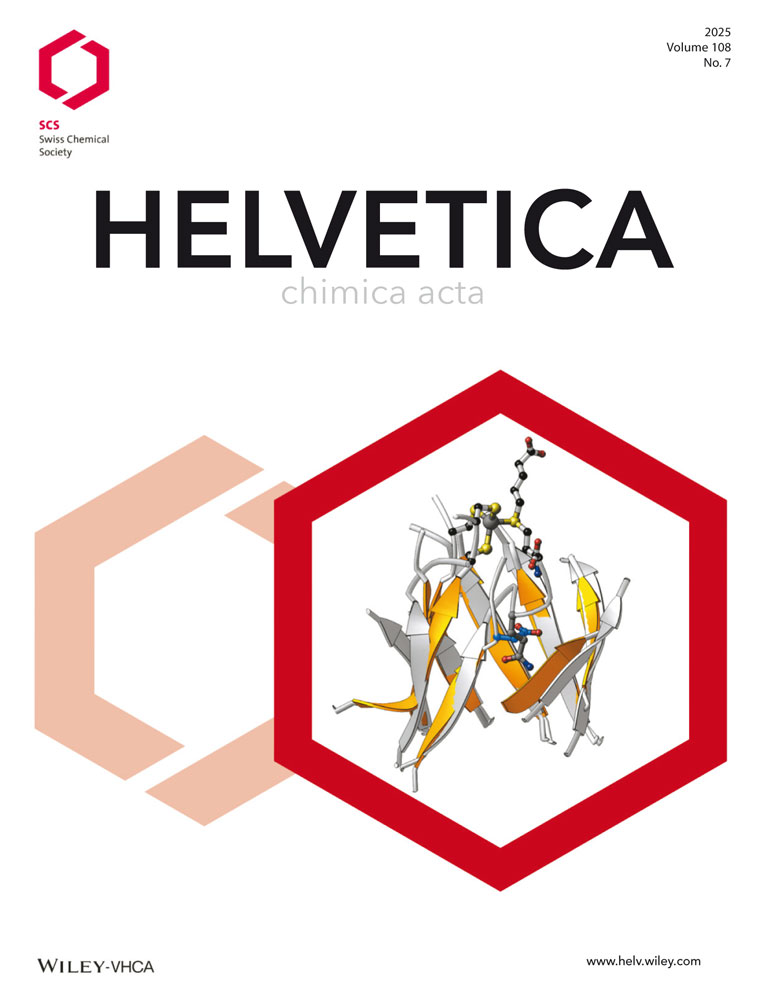Fused 1,2-Dithioles. Part VII
Synthesis and Reactions of 4H-1,2-Dithiolo[4,3-c]isothiazoles
Abstract
The 1,2-dithiolosultam derivative 14 was obtained from the (α-bromoalkylidene)propenesultam derivative 9 (Scheme 1). Regioselective cleavage of the two ester groups (→1b or 2b) allowed the preparation of derivatives with different substituents at C(3) in the dithiole ring (see 27 and 28) as well as at C(6) in the isothiazole ring (see 17–21; Scheme 2). Curtius rearrangement of the 6-carbonyl azide 21 in Ac2O afforded the 6-acetamide 22, and saponification and decarboxylation of the latter yielded ‘sulfothiolutin’ (30). Hydride reductions of two of the bicyclic sultams resulted in ring opening of the sultam ring and loss of the sulfonyl group. Thus the reduction of the dithiolosultam derivative 14 yielded the alkylidenethiotetronic acid derivative 33 (tetronic acid=furan-2,4(3H,4H)-dione), and the lactam-sultam derivative 10 gave the alkylidenetetramic acid derivative 35 (tetramic acid=1,5-dihydro-4-hydroxy-2H-pyrrol-2-one) (Scheme 3). Some of the new compounds (14, 22, 26, and 30) exhibited antimycobacterial activity. The oxidative addition of 1 equiv. of [Pt(η2-C2H4)L2] (36a, L=PPh3; 36b, L=1/2 dppf; 36c, L=1/2 (R,R)-diop) into the SS bond of 14 led to the cis-(dithiolato)platinum(II) complexes 37a–c. (dppf=1,1′-bis(diphenylphosphino)ferrocene; (R,R)-diop={[(4R,5R)-2,2-demithyl-1,3-dioxolane-4,5-diyl]bis(methylene)}bis[diphenylphosphine]).




